How to Measure and Prove the Social Media Value Generated for a Business
Don't know how to prove social media value to stakeholders? Read our insightful guide and discover tools and methods that will help you.

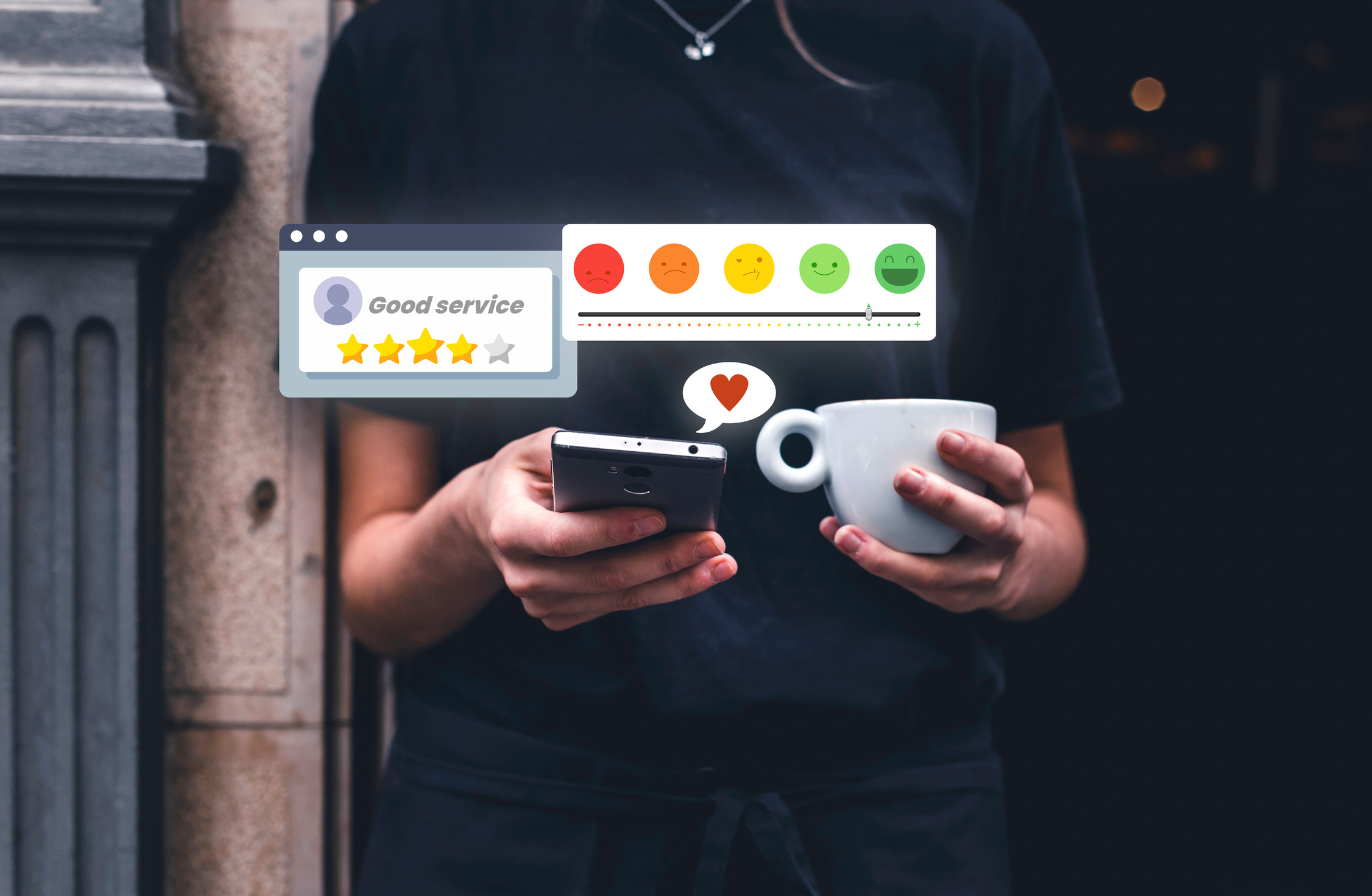
One of the hardest things about an organic social media strategy is proving the impact social media has on your business. When you’re not looking at direct monetary results like leads and sales, you start to wonder about the effectiveness of social media marketing and whether it’s working at all.
However, there are still ways to prove social media value—even when you’re looking at metrics like reach, follower growth, and engagement.
Throughout this article, we’re going to talk about how to measure social media value, proving that value to stakeholders and higher-ups, and the tools that can help. Read on to learn more.
Key takeaways
- How to measure the value brought by social media: focus on relevant metrics, tie KPIs to business goals and choose effective tools for tracking.
- There's social media value beyond metrics, which can be recognized through brand advocacy and earned influence, as well as community sentiment.
- Social media value can be proven to stakeholders through competitive analysis and superior performance insights, and comparisons to industry benchmarks.
Why calculate how much value social media brings to a business?
Understanding and proving the value of social media is essential for aligning marketing activities with business priorities and maximizing overall impact. Measuring social’s contribution ensures that it is seen as a strategic driver, not just a communication channel.
Here’s why it matters:
- Highlights the direct impact of social media on business objectives: By tracking the right social media metrics against key business goals, you can demonstrate how social efforts contribute to brand awareness, lead generation, customer retention, and revenue growth. This alignment makes it easier to justify strategic decisions and positions social as a critical part of the business engine—not an isolated activity.
- Proves ROI to stakeholders: Clear measurement shows how social media initiatives generate tangible outcomes like leads, sales, or customer loyalty. This evidence is crucial for earning executive trust, securing budget, and reinforcing the value of social media investments. When you quantify impact, you turn perceptions into proof.
- Helps assign resources more effectively: Knowing which platforms, campaigns, and content types drive real results allows you to prioritize efforts that deliver the highest return. Accurate measurement leads to smarter resource allocation, ensuring team time, creative production, and ad spend are directed toward activities that move the business forward.
- Proves the importance of organic content: Organic social media often plays a foundational role in building brand credibility, fostering community, and driving long-term loyalty. By measuring how organic posts contribute to key metrics like engagement, reach, and customer satisfaction, you can highlight its strategic value and secure continued investment—even alongside paid campaigns.
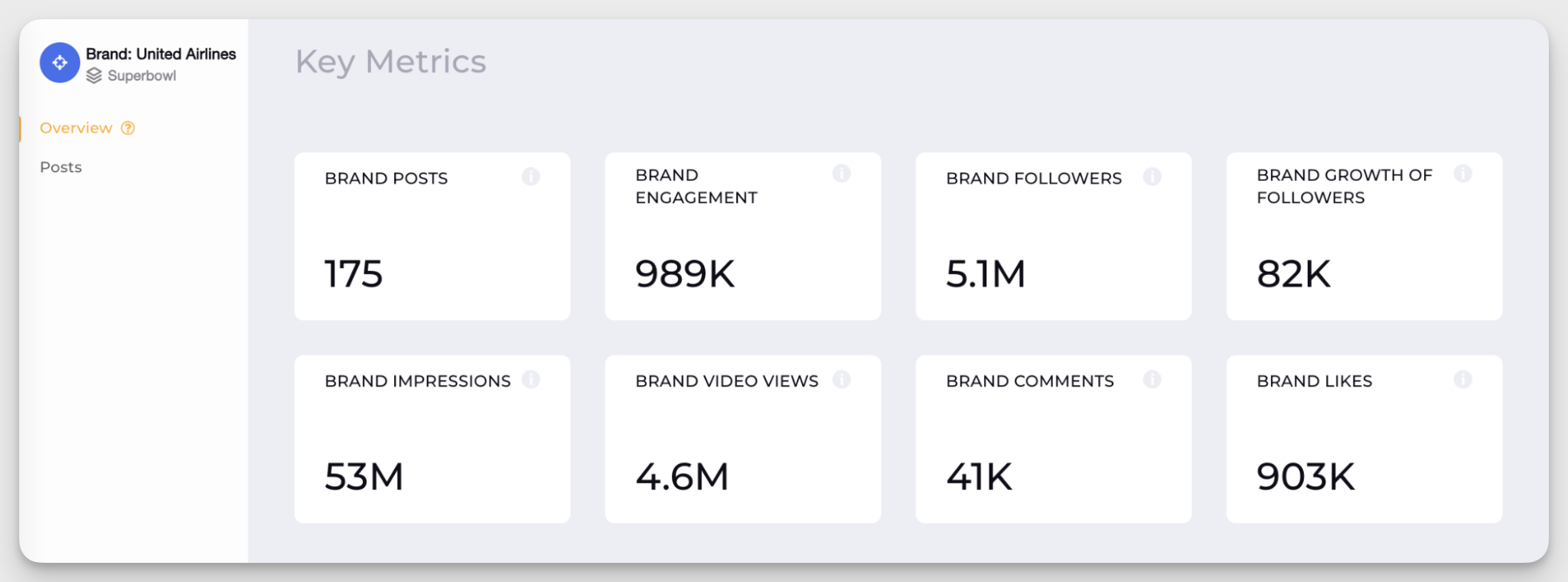
Get powerful social media performance data!
Use data to prove the resuts generated by social media to stakeholders!
Start your 14-days FREE trial!Social media value proving framework
Proving the value of social media goes beyond reporting engagement metrics or showing reach numbers. During our recent webinar with Brooke Sellas (CEO, B Squared Media), we explored a practical framework that any social media professional can apply to connect conversations with real business outcomes.
Think of this playbook as your step-by-step approach to demonstrating ROI from organic social media.
Step 1: Shift the mindset — from content to conversations
One of the biggest misconceptions in 2025 is that social media is still about content first. The truth is, content is only the starting point. What matters most is the conversations your content sparks.
According to Brooke:
Content is the vehicle. Emotion is the destination. That is how you stop the scroll. You have to have emotion in your marketing messages, and the emotion should match, as you said many times, your ideal customer profile, or your ICP. You have to know what they're feeling and what their opinions are around your brand. Your industry, your competitors, and then that's how you formulate content. It's just the vehicle to get to emotion, which then gets people to start talking.
Instead of chasing the “perfect” caption or video, focus on how your content makes your audience feel and whether it prompts them to respond. Every comment, debate, or question is an opportunity to prove value.
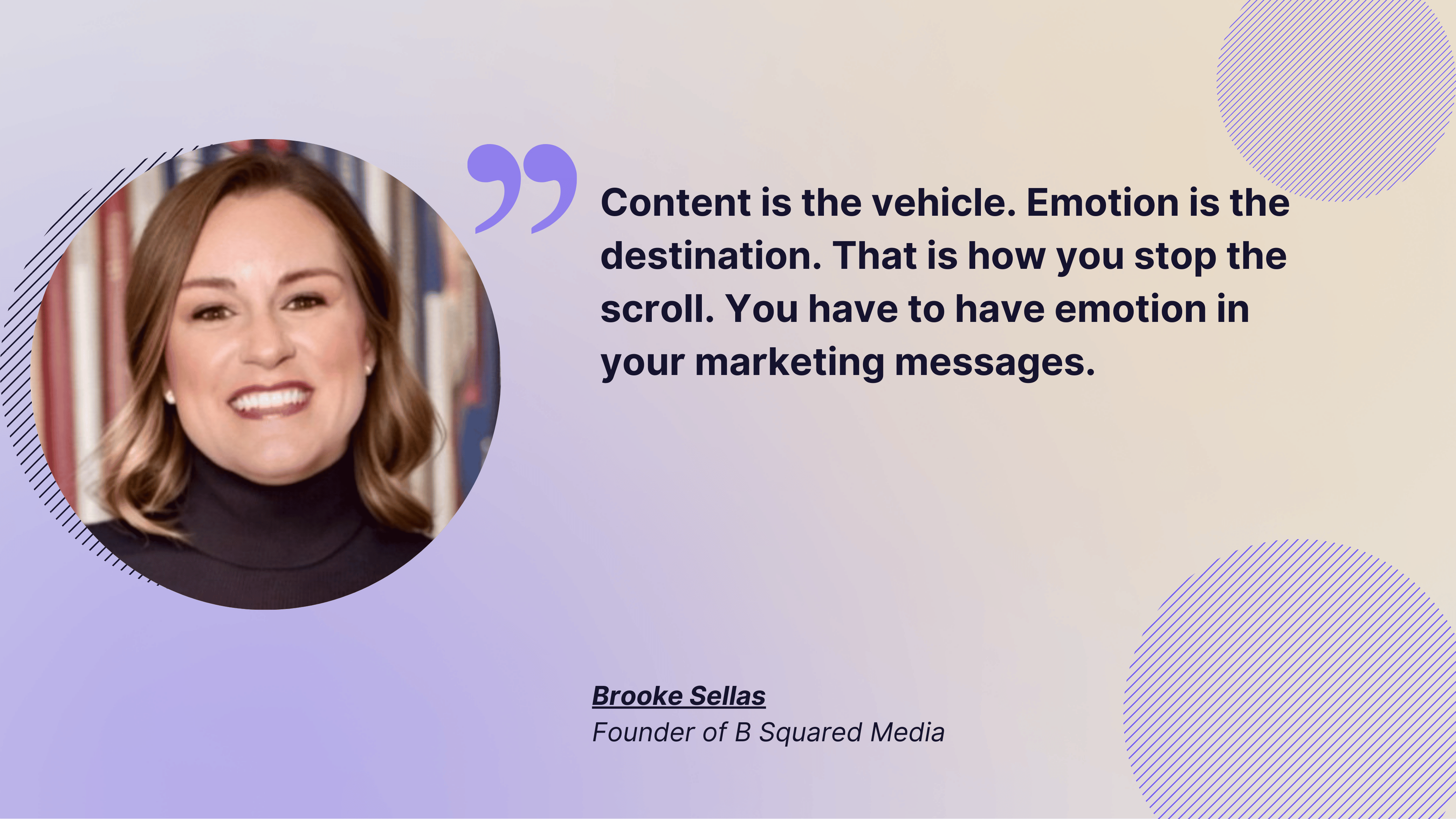
Step 2: Apply the CARE Framework
Brooke introduced the CARE framework to help brands move from engagement to measurable results:
- C – Conversations → Design posts to generate dialogue, not vanity likes.
- A – Acquisition → Tag conversations that show buying intent.
- Example: “Do you ship to Canada?” → tagged as acquisition → closed sale with a promo code.
- R – Retention → Track conversations that prevent churn.
- Example: A shipping complaint handled well turns into brand loyalty.
- E – Engagement → Use comments and interactions to collect voice-of-customer insights.
- Example: A jewelry brand launched a gold version of a necklace after repeated customer requests → it sold out in days.
Step 3: Build attribution into your workflow
Tracking the business impact of social starts with making attribution part of your process:
- Promo codes → connect sales directly back to social conversations.
- Dedicated landing pages → for B2B campaigns, so form fills are tied to social traffic.
- CRM integrations → connect customer interactions on social with pipeline data.
- Customer surveys → simply asking “Where did you hear about us?” often reveals social’s hidden influence.
Every brand is different, but the goal is the same: prove that conversations move people closer to conversion.
Step 4: Create talk-worthy content
Not all posts generate conversation — and that’s okay. To spark dialogue, focus on non-controversial controversies and polls that invite opinions.
Examples:
- A beauty brand asking: “What’s the right skincare routine — sunscreen first or moisturizer first?”
- An equine brand posting: “Which saddle pad looks best on this horse: green, pink, or purple?”
Here's Brooke's recommendation:
Now polls are available on most social media platforms, either through in-feed posts, such is the case of LinkedIn or through other features, such as Instagram Stories. Use them to ask your followers ask questions related to your brand. They are a valuable research tool.
Step 5: Measure Return on Conversation (RoC)
Beyond standard metrics, consider tracking Return on Conversation — a score that weights meaningful, back-and-forth exchanges higher than quick likes or “thanks.”
- A simple “thanks/you’re welcome” may count as a low-value interaction.
- A detailed back-and-forth that reveals product preferences or frustrations has a higher value.
This type of data doesn’t just show activity — it can lead to real business improvements (e.g., changing packaging after customers repeatedly complained).
How to measure the value brought by social media
If you’re looking to measure social media value and what your overall social media strategy is worth to your business, there are three key steps.
First, find the right KPIs that help you gauge your strategy’s impact. Once you know what metrics to track, you need to attach those to your overall business goals—this will help you see if your social media efforts are actually impacting your bottom line. And finally, you need the right arsenal of tools to help you do this.
Follow along as we walk you through each of these three steps.
Focus on relevant metrics
Gauging ROI is a major challenge for social media marketers. But if you focus on the most relevant metrics and insights, you’re already taking a step in the right direction.
We’re going to cover all of the major social media KPIs that you might want to consider adding to your monthly or quarterly reports. Keep in mind that you don’t want to track every single metric out there. Instead, focus on the most relevant ones to your strategy and your goals.
Reach and impressions
Your reach and impressions give you an idea of how many people are seeing your social media content.
Reach refers to how many unique users see your content, and impressions tell you the total number of times your content is displayed. So your impressions data will likely always be higher, as some people may see your posts more than once.
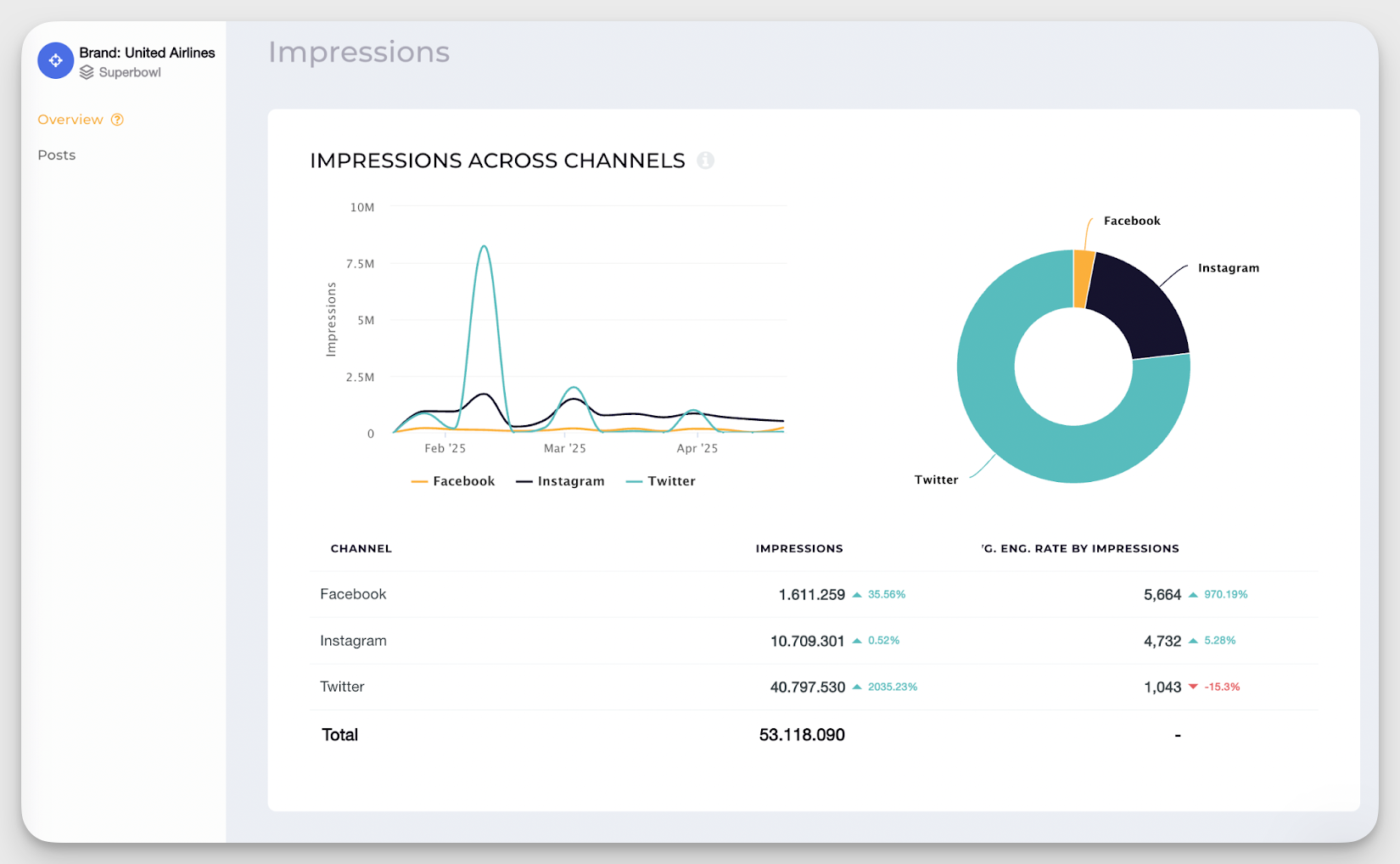
Follower growth
Follower count is often viewed as a vanity metric, in that the number of followers you have doesn’t really mean much if those same followers aren’t very engaged in your content. However, knowing your follower count and monitoring your growth remains important, helping you gauge market share.
A best practice is to track follower count and follower growth together, making it easier to pinpoint effective campaigns in amplifying your brand's social media presence.
Moreover, a breakdown of these metrics across social platforms will help you identify the most effective networks for brand expansion.
Here's how to quickly do that with Socialinsider.
- Go to the Home section and add your brand's profiles.
- Also from the Home section, group all your profiles under one brand by clicking on the Create brand button available on the right side of the screen.
- The brand created will appear in the left-sided menu, above your profiles, and all you have to do now is click on it.
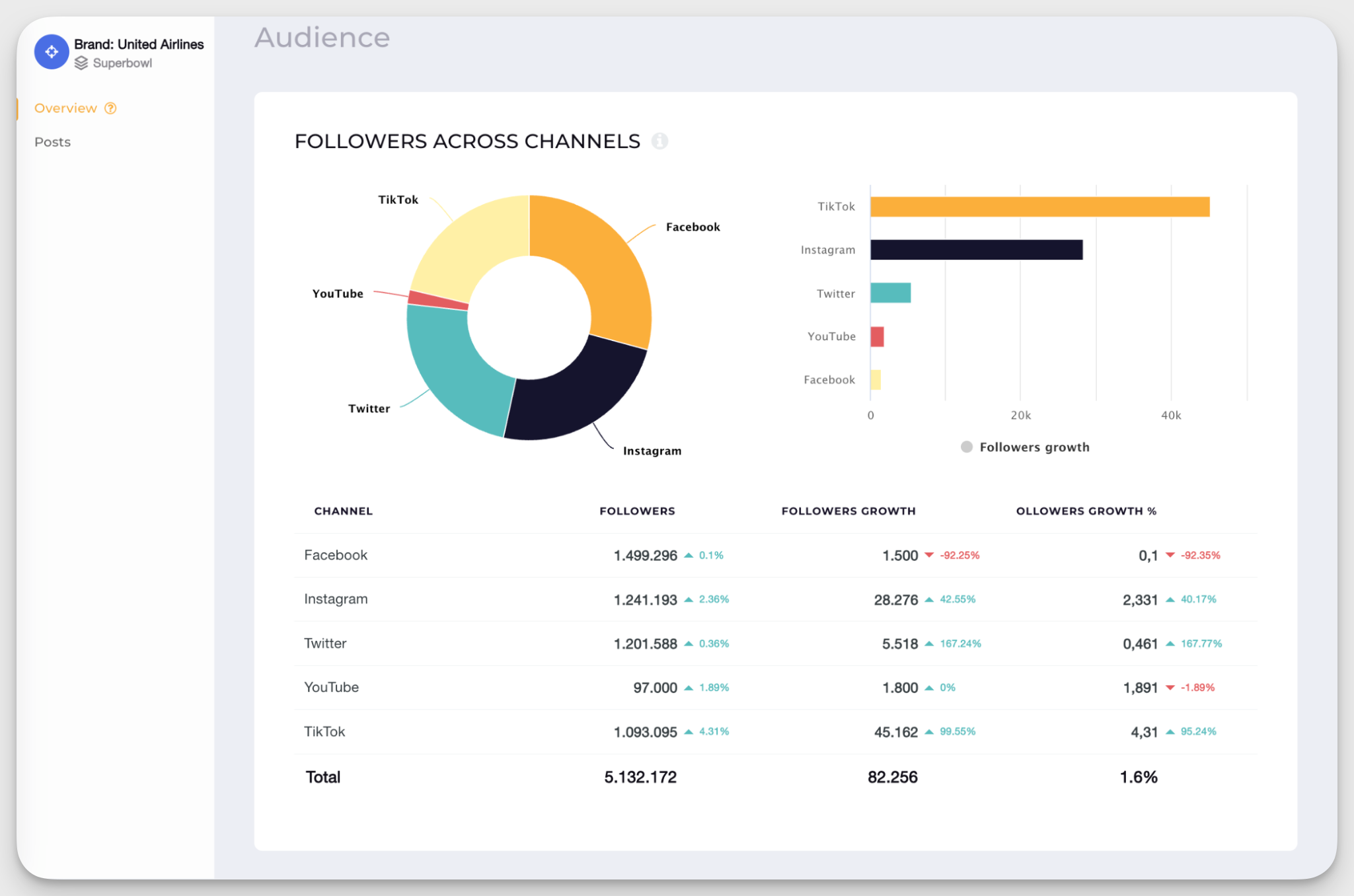
When you tie specific social media initiatives to the impact they've had on different metrics such as reach, follower growth, and engagement, mapping the customer journey all the way to sales, proving the value brought in by social media gets easier.
Engagement
Social media engagement is going to be one of the most important metrics you can track from your organic social media strategy.
Engagement refers to the different interactions a social media user can have with your post—a like/reaction, comment, or share. Some platforms even have capabilities like saves or bookmarks for users to come back to your posts later.
The more engagements you can generate from your audience, the better. And some interactions are more valuable than others. For example, a comment means more than a like, but a save means more than a comment.
Think of it like this. Many people scroll through their social media feeds, liking different posts. But it takes something special for someone to want to leave a comment, share it with their friends, or save it for later.
With Socialinsider, you can gain access to in-depth engagement data, such as engagement across channels, or even to platform-specific engagement analysis, including engagement evolution over time, engagement by content types, and more.
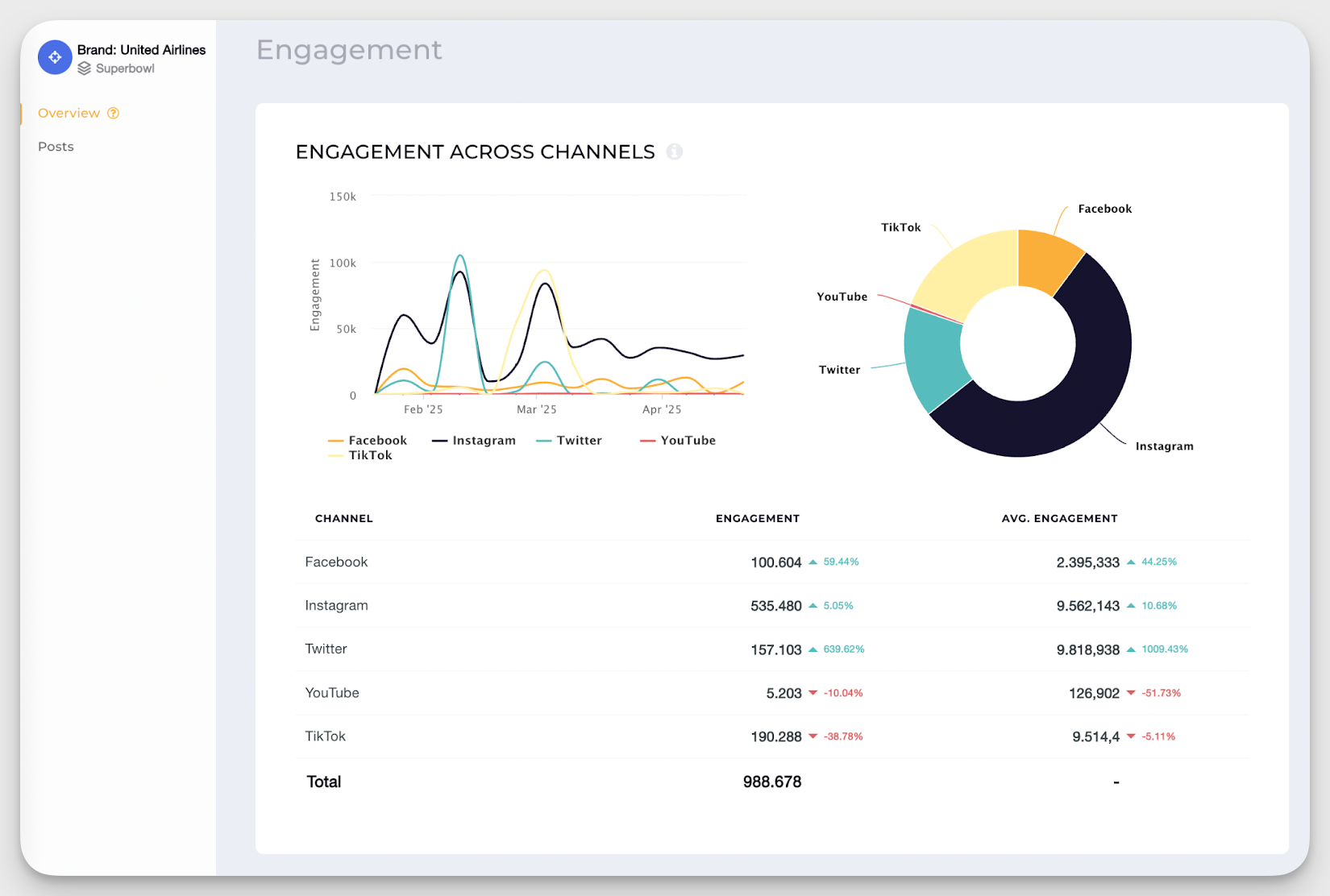
Traffic
When we talk about traffic, we mean the website visitors that your social media platforms can bring you. How many clicks are coming from your profile link or social media posts to your business website?
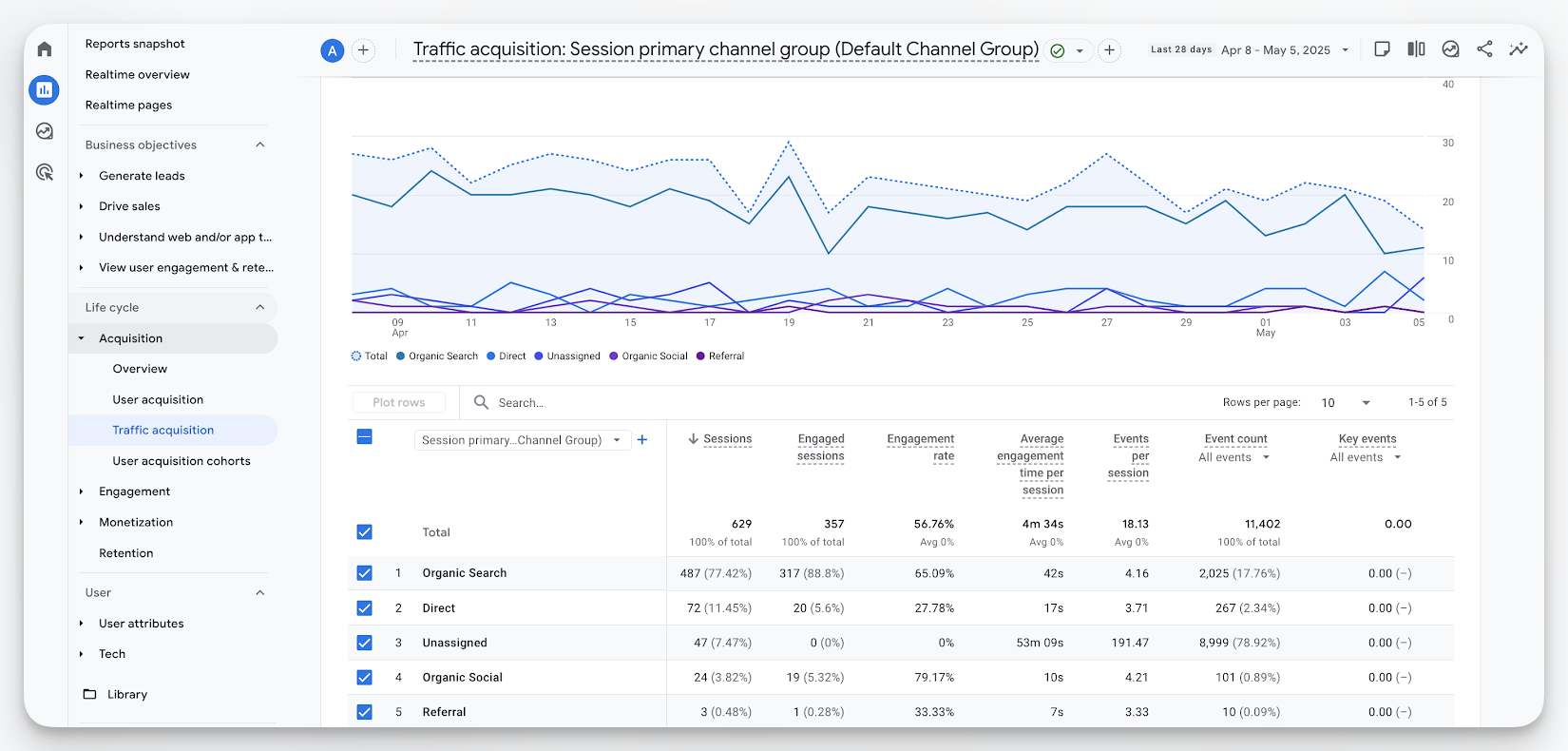
You can find this data in your Traffic Acquisition report inside Google Analytics. Simply look at how many sessions are coming to your website due to Organic Social.
Leads generated
One big sign of success in B2B social media ROI is lead generation. Instead of direct sales, many B2B companies—especially with a larger ticket price—want to generate leads that their sales and marketing teams can nurture into sales via a more direct messaging route.
Leads generated refers to the number of potential customers that your business has received contact information from, so you can keep in touch with them until they become paying customers.
By setting up UTM tracking links in your Google Analytics account, you can easily keep track of how many leads have been generated directly due to your social media marketing efforts.
Sales
Sales are obviously one of the most important metrics to track, but it’s not often that social media marketing leads to sales.
However, if you have UTM tracking set up or if you’re selling products directly through a social media catalog like Instagram or TikTok Shop, it can be a lot easier to gauge how much revenue you’ve made straight from social media.
Customer satisfaction
Customer satisfaction refers to how your customers feel about your business. Are they happy working with you? Or are you seeing a lot of customer complaints?
To monitor your customer satisfaction, use social listening tools so you can keep up with online conversations surrounding your brand. You can also create social media accounts specifically for customer service to ensure you’re available on every platform your customers might need you.
CLV
CLV, or customer lifetime value, is a revenue metric that tells you how much you can expect to earn from each customer over their time working with or buying from your business.
To calculate this metric, you’ll need to know:
- Your average purchase value: The value of all purchases made within a certain time frame divided by the number of purchases made in that same time frame.
- Your average purchase frequency: The number of customers who made a purchase within a certain time frame divided by the number of purchases made in that same time frame.
- Your average customer lifetime: The average length of time a single customer continues to make purchases from your business.
You can then use the following formula:
CLV = (Average Purchase Value x Average Purchase Frequency) x Average Customer Lifetime
Knowing your CLV helps you gauge what a customer is worth to your business, putting a monetary value on every conversion your strategy generates.
Repeated purchases
And finally, repeat purchases can help you gauge things like customer lifetime and customer satisfaction. You should be able to track repeat purchases within your company’s CRM (or customer relationship management tool).
Tie metrics to business objectives
Measuring the right social media metrics is essential, but the real value comes from tying them directly to business objectives. This approach ensures that your efforts support broader company goals and allows you to make smarter decisions based on actual business impact.
Reach, impressions, and follower growth to brand awareness
Tracking reach and impressions helps gauge how far your brand message travels, while follower growth shows your ability to attract and retain attention. Monitoring these metrics allows you to assess whether your brand is expanding its presence in the market and attracting new audiences.
When brand awareness increases, it leads to a larger top-of-funnel audience, creating more opportunities for future engagement and conversions.
Engagement to community building
Monitoring engagement metrics (likes, comments, shares, saves) reveals how invested your audience is in your content and brand story.
High engagement rates indicate strong emotional connection and loyalty, making your audience more likely to advocate for your brand organically.
By nurturing an engaged community, you build trust, strengthen brand affinity, and encourage word-of-mouth marketing, all of which contribute to sustainable business growth.
Traffic, leads and sales to conversions
Tracking traffic from social media to your website, the number of leads generated, and sales conversions allows you to see exactly how social efforts are driving revenue-generating actions.
This connection helps prove that social media is not just a brand-building tool, but a direct contributor to the sales funnel.
At Socialinsider, we ask our customers how they heard about us, and social media ranks among the top five channels for sales and leads.

Customer satisfaction, CLV, and repeated purchases to customer retention
Monitoring customer satisfaction via sentiment analysis, customer lifetime value (CLV), and repeat purchase behavior shows how well social media supports loyalty and ongoing customer relationships.
When satisfaction scores are high and customers keep coming back, it reduces churn and increases revenue predictability over time.
Engaging with customers and understanding their needs requires significant effort from the marketing team, but it pays off in the long run. For example, Razvan Visan, co-founder of Socialinsider, actively engages with our customers on LinkedIn.
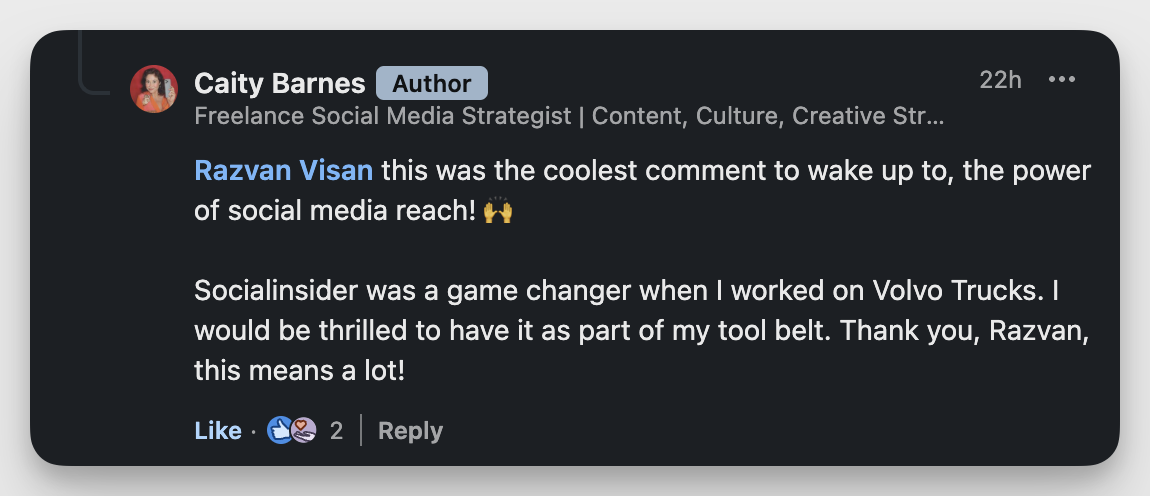
Tying social efforts to retention also demonstrates how social contributes beyond acquisition, by nurturing lifetime brand advocates and maximizing the value of each customer relationship.
Choose tools that will help track important metrics
There are three different types of tools you need to track important social media metrics: a social media analytics tool, a website analytics tool, and a CRM. Let’s dig through our top three recommendations.
Socialinsider for social media analytics and performance tracking
Socialinsider is a social media analytics and competitive benchmarking tool that’s perfect for tracking your social media metrics and gauging how well you’re stacking up against competitors.
If you’re worried about your own performance versus those in your industry, you can easily compare reach, impressions, engagement, follower growth, and so much more.
Google Analytics for conversion tracking
Google Analytics is a completely free tool that lets you monitor pretty much any aspect of your website performance. Not only that, but you can set up custom dashboards to look at only the most relevant metrics, you can set up tracking URLs, and you can track your conversions.

HubSpot CRM for customer activity monitoring
HubSpot offers a lot of different sales and marketing tools, and one of them is a CRM. The best part? Their CRM is completely free—though you may end up signing up for some of their additional features and capabilities.
Take advantage of HubSpot’s CRM to monitor how your customers move through the sales funnel. Watch as leads become customers, new customers become repeat customers, and your customer lifetime value increases.
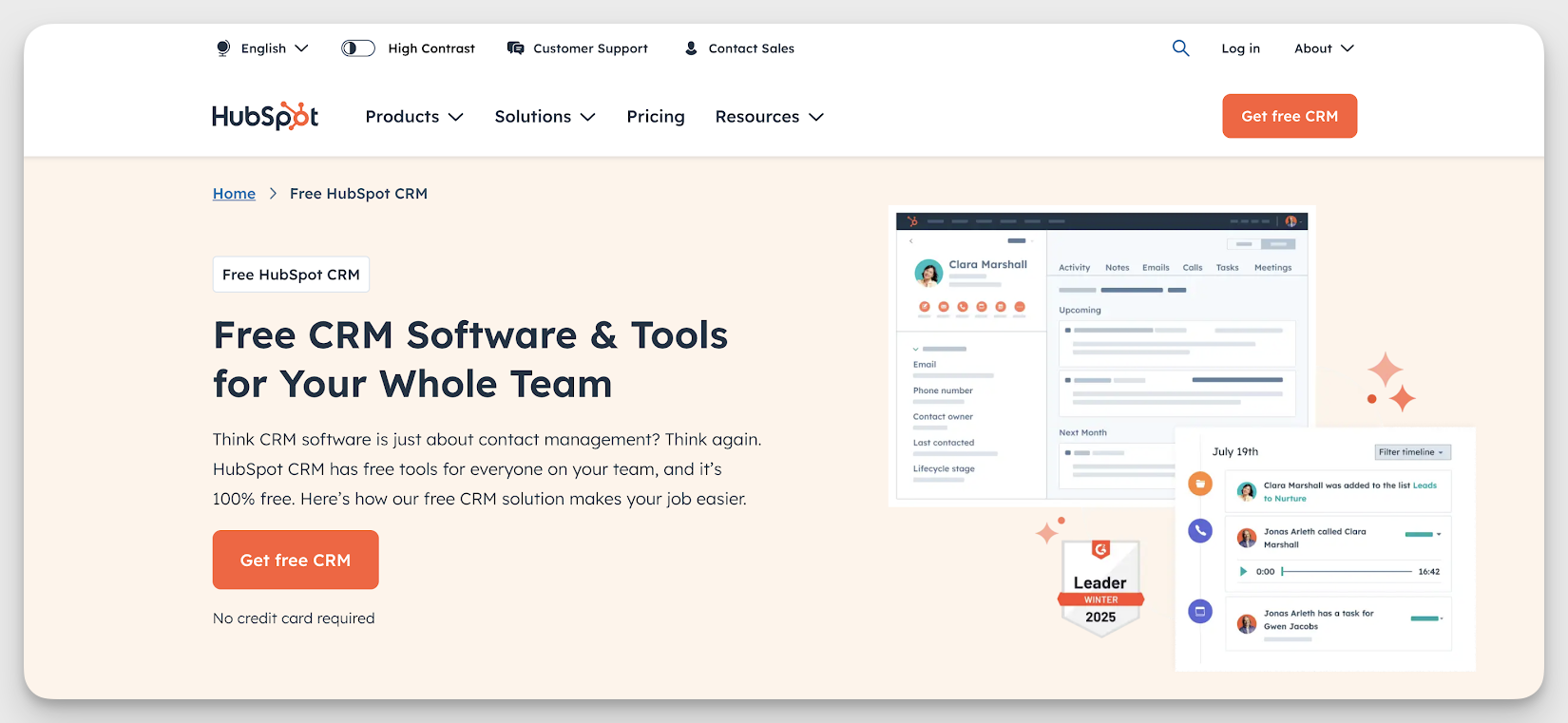
Use Socialinsider’s Organic Value feature
Our Organic Value feature transforms social media metrics such as likes, comments, shares, impressions, and follower growth into real-dollar estimates. Each metric is weighted—comments and shares are valued higher than likes because they signify deeper intent or amplification—using platform benchmarks that reflect typical advertising spend.
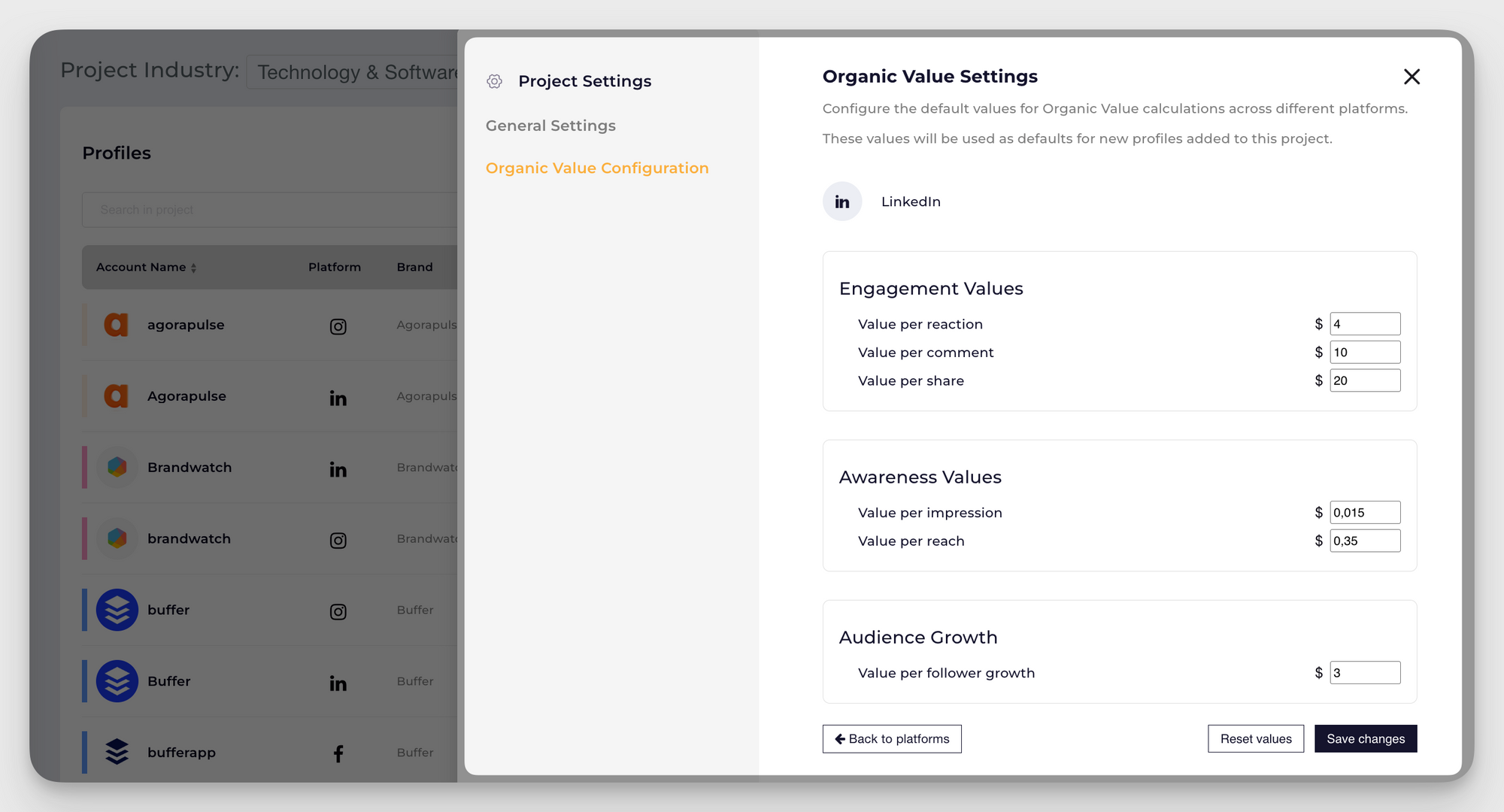
But the numbers are fully customizable for more accurate estimates; you can tweak the default values to align with your brand’s goals. The result? A straightforward, ROI-focused metric that empowers social teams to confidently report how their organic efforts truly contribute to revenue—and step into “dollars not data” conversations with stakeholders.
Measuring social media value beyond numbers
Keep in mind, though, that social media has value beyond tangible numbers and results. Your social media strategy can bring in a return that simply can’t be measured.
Let’s jump into three key ways that social media marketing can have a big impact on your brand that you can’t assign a monetary or numerical value to.
Brand advocacy and earned influence
As you bring in more customers and (ideally) improve customer satisfaction, you’ll start to organically create brand advocates.
A brand advocate is someone who speaks publicly about and in favor of your brand. They might post about your brand on social media, share your brand’s social media posts, or just tell their family and friends about your brand.
For example, we’ve built a very strong relationship with social media strategist and speaker Dorien Morin over the years. We often collaborate on projects, and she’s become a strong advocate for Socialinsider.
As you can see from the example below, she regularly shares content mentioning our team and our tool.
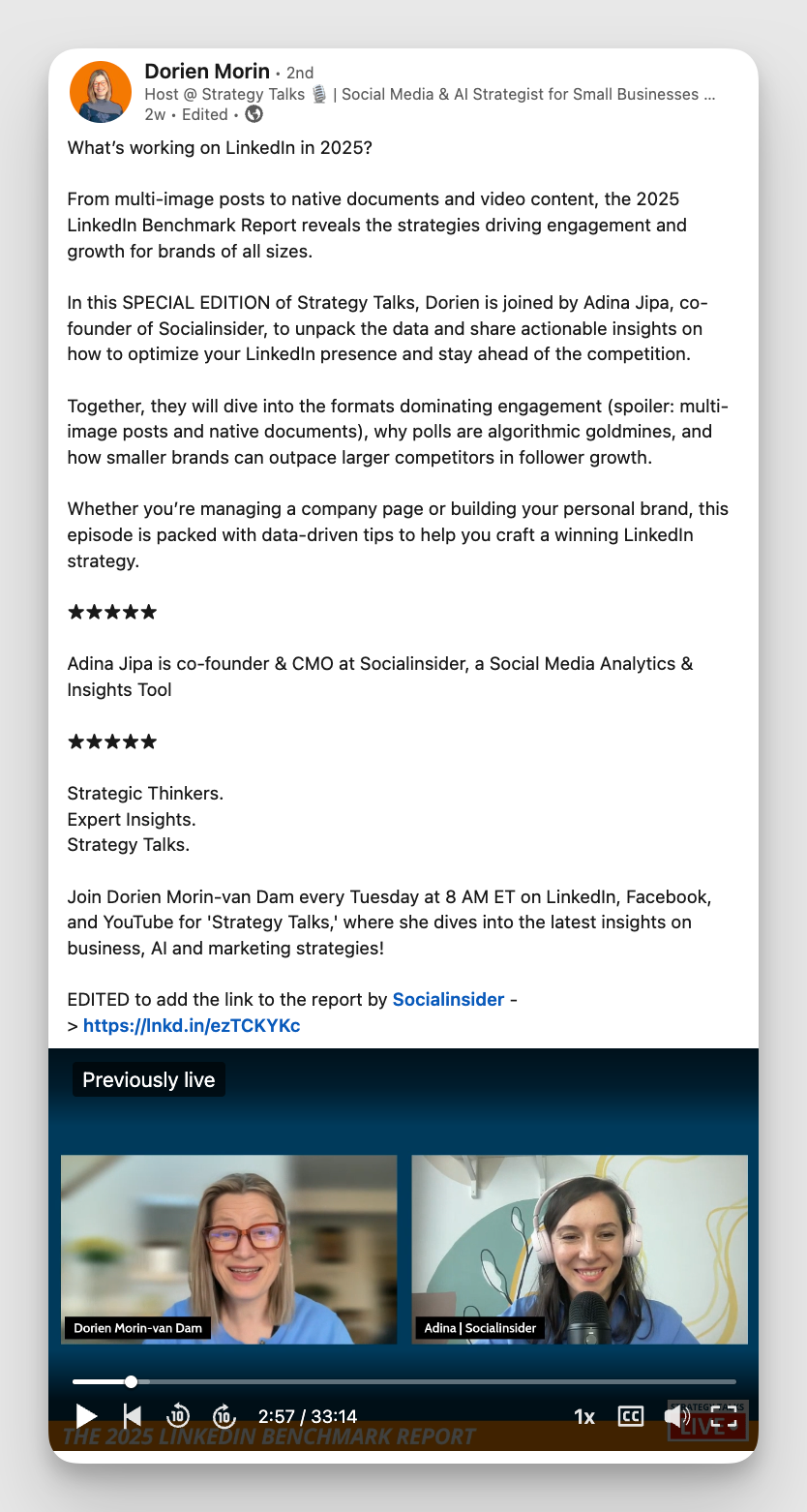
Pay attention to people who are regularly talking about your business online. This is free marketing! Show them you see them and reward them with merch, freebies, or the ability to test-drive new features or products before the rest.
Community sentiment and relationship strength indicators
You also want to pay attention to how your online community appears to feel about your brand, your founders, or your team as a whole.
There are a few ways to do this.
First, use social media monitoring tools that can help you keep an eye on brand mentions. Pay attention to the sentiment behind these. Do they tend to be more positive or negative?
Next, look at the conversations those in your team are having in professional spaces like LinkedIn. Do people know about your business? Do they appear to have positive or negative connotations towards it?
Finally, consider creating your own sentiment surveys. These are simple surveys that you can send via email or place on your website that ask people to rate your business on a scale of 1-5 or 1-10. Analyze your overall sentiment to see if you need to make any changes.
But the point is this: positive community sentiment is valuable. Working to improve your brand sentiment and build stronger relationships throughout the community can boost your brand perception across social media—something that is important but simply can’t be measured.
Competitive advantage gaining
Another way that social media can bring value to your business is by creating a competitive advantage.
When you’re able to entertain your audience through your social media marketing, your business starts to become top of mind due to your fun content and communication style.
Surreal is a great example of this. The cereal brand uses bold visuals and chaotic marketing copy to solidify its place with its audience, making sure that when people think of healthy cereal for adults, their minds will immediately go to Surreal.
Look at this Instagram carousel post as a great example of how the brand has fun with its marketing:

Even if your brand doesn’t have a big personality like this, you can still use social media to help give yourself a competitive edge. Share flash sales and discounts on different social media platforms, use your presence to provide great customer service, and build relationships with your customers that your competitors don’t have.
How to prove social media value to stakeholders
Now let’s get into one of the most important—and one of the most difficult—parts of social media marketing. You need to prove social media’s value to your stakeholders and higher-ups.
The C-Suite doesn't want to hear about things like brand sentiment and competitive advantage. They want to know about things like:
- How is social media directly contributing to the pipeline?
- Where are the conversations happening and what are the outcomes?
- How are campaigns tangibly performing and which ones deserve more investment?
Use these tips to showcase the value that social media is bringing to your business so that you can keep (or even increase) your social media budget.
Highlight how various content pillars impact the brand’s image and KPIs
Categorize your social media posts into different content pillars to identify what resonates with your audience and delivers the best results. From there, show how each of these pillars contributes to KPIs such as reach and engagement.
You can easily separate your content into pillars using Socialinsider. Manually create tags or take advantage of Socialinsider’s AI to categorize them for you based on its analysis of your content and industry.
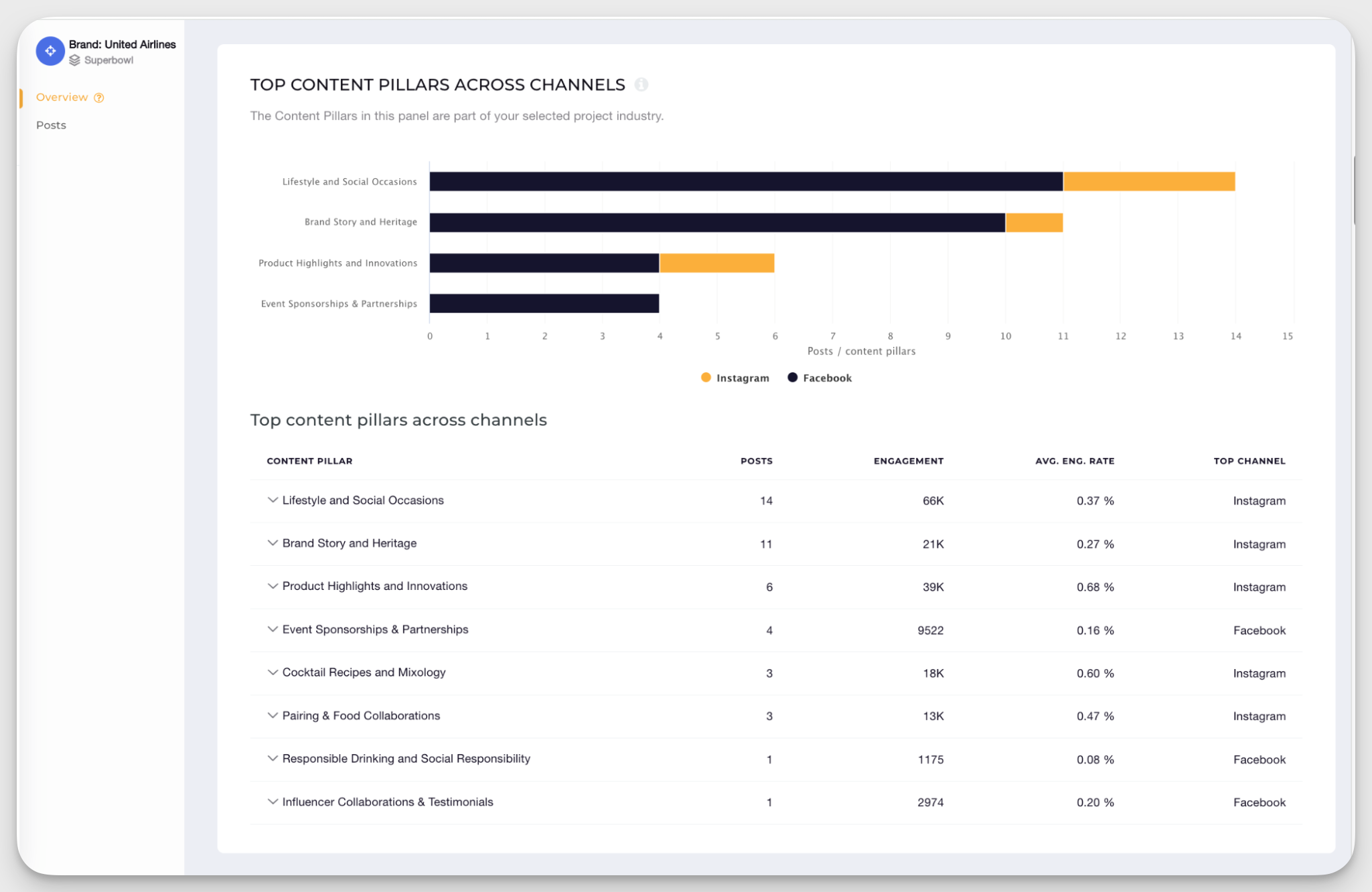
From there, you can see details like:
- Which content pillars you post about most often.
- How each content pillar is performing.
- How different pillars perform on different channels.
Because organic social media can sometimes be hard to defend, having tangible information about the types of content your audience likes can help prove to stakeholders why it’s important to keep creating that content.
Present them with cross-platform metrics and emphasize achievements
Aggregate data across all platforms (Instagram, Facebook, TikTok, etc.) to show your brand’s complete performance. This provides a comprehensive view of your social media impact, rather than trying to sparse it up platform by platform.
Socialinsider has an Overview dashboard which lets you see your social media impact at a glance.
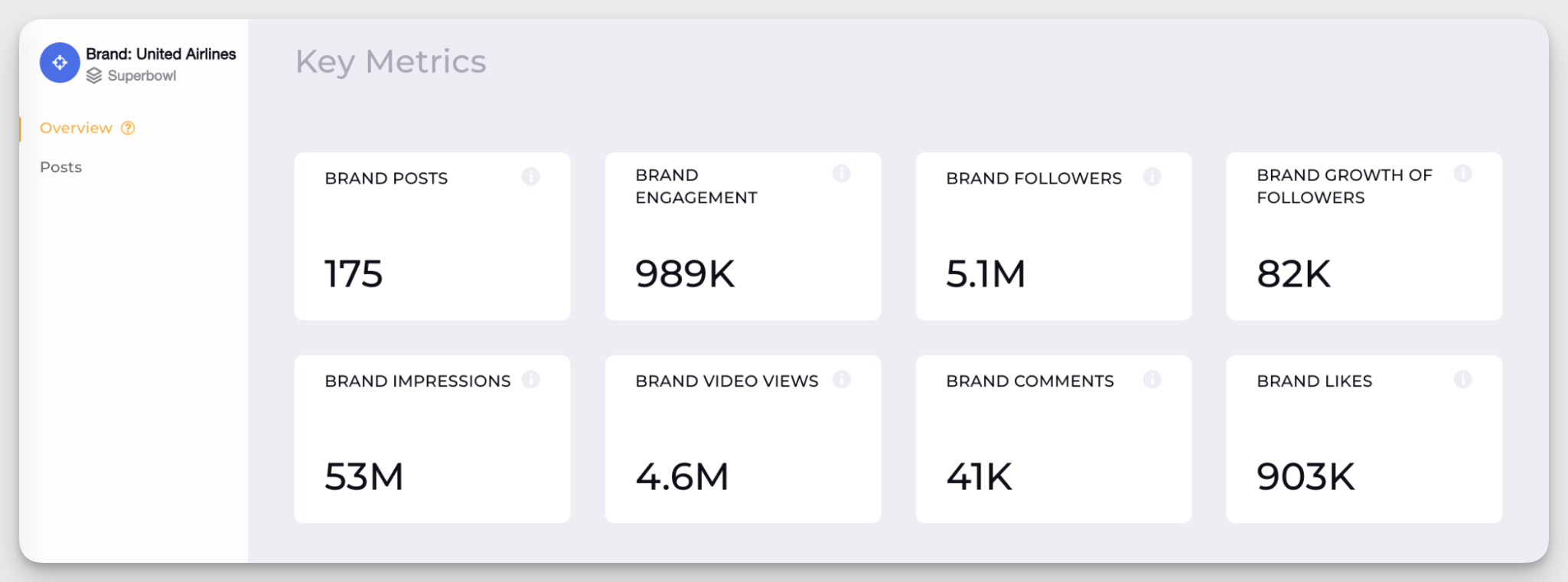
With this dashboard, you’ll get access to social media insights like:
- The number of posts you’ve shared across all platforms
- The total number of views and impressions your content has generated
- The total number of engagements your content has generated
- How many followers you’ve brought in
But more than all of your cross-platform data, you also want to highlight specific achievements. Things like:
- Which post(s) outperformed the rest?
- Did anything go viral?
- Did you receive any comments that stand out?
- Did you boost follower growth by a big amount?
Sharing anecdotes from your social media impact is another great way to prove its value to the higher-ups.
Provide competitive insights and advantages
Compare your social media performance with competitors to demonstrate relative value. Your C-Suite wants to see when your brand is outperforming others in the industry.
Using Socialinsider, you can easily conduct a social media competitive analysis that will offer you plenty of helpful insights, such as your competitors' most effective platforms for different objectives, posting patterns and best-performing posts across channels.
To get access to this kind of data, simply add your competitor social media profiles in the dashboard and do a platform-by-platform comparison of every competitor of interest, such as in the example below.
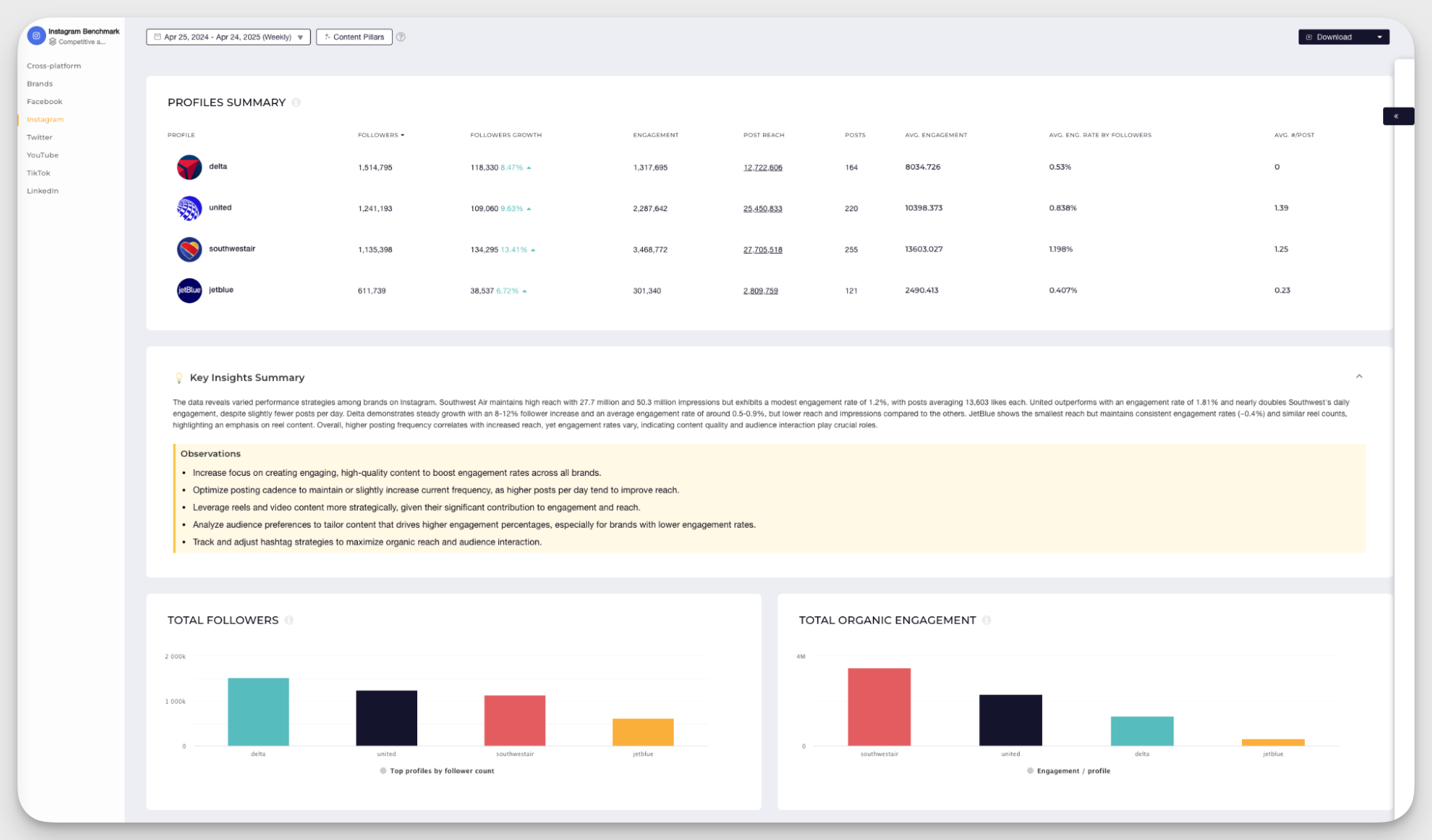
Competitive intelligence is an important facet of your social media analytics to have on hand. Knowing where you stand in your industry helps justify your social media strategy to executives.
Benchmark performance against industry standards
More than just looking at your direct competitors, understand your industry benchmarks as a whole so you have a goal for how your brand’s social metrics should look.
For example, compare industry engagement rates across platforms to see what you should be aiming for with your social media content.
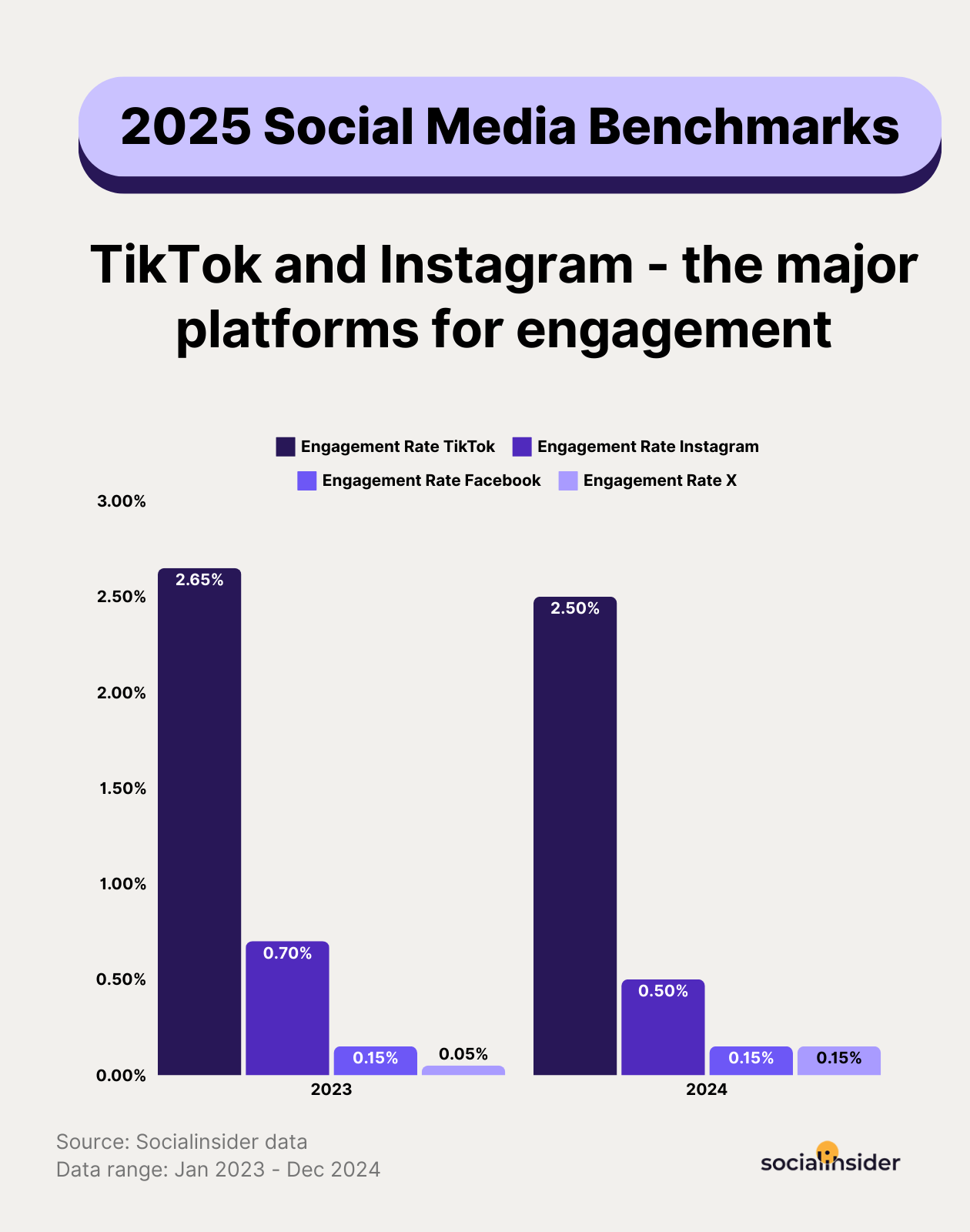
Socialinsider has tons of data on social media benchmarks for you to use in your reports for your stakeholders.
Measure and present ROI
Determine your social media ROI by correlating different social media activities with business outcomes. We talked about this in the section about tying your metrics and KPIs to different business objectives.
By showcasing how social media is impacting these different goals, your executive team will get a much clearer picture of the value of social media.
For example, if you’ve run an influencer marketing campaign, you’ll want to take things into consideration like the cost of the collaboration, the time your team spent, and any ad spend you may have used on the promotion, then correlate it with the results generated.
Use the following formula to showcase your ROI:
ROI = (Net Profit / Cost of Investment) x 100
Then be sure to present your findings in your report.
Provide on-point executive social media performance reports
Put together reports that tell a compelling story about your social media performance. Instead of simply listing out numbers and generating charts, tell the story about what this data means. It makes the insights much more accessible to leadership, but also puts it in a format they care about.
How to build relevant reports for the C-level suite
Use these tips to build reports that are relevant to the executives who are making decisions about your budget and strategy.
- Include executive summaries that highlight the value of social media. The report itself and each major section should include a summary that outlines everything executives will see by diving deeper into the report. Share social media’s value and your results in an easily digestible way before diving into the nitty gritty details.
- Highlight the status and progress of the objectives set for social media. Your social media strategy started out with objectives, and you want your report to showcase how you’re doing meeting those objectives. Highlight goals met and put together progress reports for objectives you’re still working on.
- Integrate visually friendly charts and provide a story for the data. Don’t put meaningless numbers in front of your higher-ups. Create charts and add supporting information that let your report readers immediately understand what you’re trying to tell them.
Final thoughts
Your social media value can easily be proven if you focus on the right metrics, tie them to business goals, and use your reporting to tell a story. Take advantage of social media analytics tools like Socialinsider to compile comprehensive reports and analyze your competitive advantage.
Analyze your competitors in seconds
Track & analyze your competitors and get top social media metrics and more!
You might also like
Improve your social media strategy with Socialinsider!
Use in-depth data to measure your social accounts’ performance, analyze competitors, and gain insights to improve your strategy.




